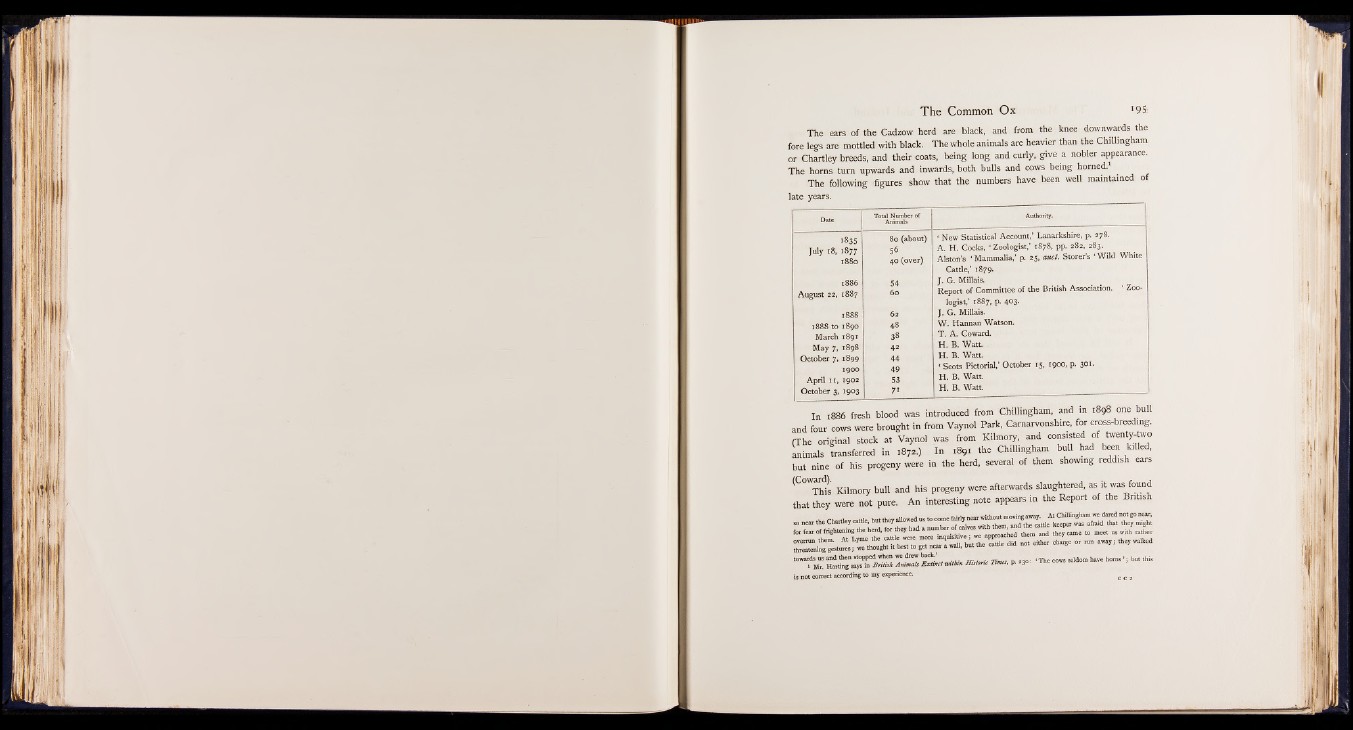
The ears of the Cadzow herd are black, and from the knee downwards the
fore legs are mottled with black. The whole animals are heavier than the Chillmgham
or Chartley breeds, and their coats, being long and curly, give a nobler appearance.
The horns turn upwards and inwards, both bulls and cows being horned.1
The following figures show that the numbers have been well maintained of
late years.
Date TotaAl nNimumalbser of Authority.
1835 80 (about) ■ New Statistical Account,’ Lanarkshire, p. 9p£jjj|J
July 18, 1877
1880
A. H. Cocks, ‘ Zoologist,’ 1878, pp. 282, 283.
40 (over) Alston’s ‘ Mammalia,’ p. 25, auct. Storer’s ‘Wild White
Cattle,’ 1879.
J. G. Millais.
August 22, 1887 60 Report of Committee of the British Association. ■ Zoologist,’
1887, p. 4° 3-
1888 62 J. G. Millais.
1888 to 1890 48 W. Hannan Watson.
March 1891 38 T. A. Coward.
May 7, 1898 42 H. B. Watt
October 7, 1899 44 H. B. Watt
1900 49 • Scots Pictorial,’ October 15, 1900, p. 301.
April 11, 1902 53 H. B. Watt.
October 3, 1903 71 H. B. Watt
In 1886 fresh blood was introduced from Chillingham, and in 1898 one bull
and four cows were brought in from Vaynol Park, Carnarvonshire, for cross-breeding.
(The original stock at Vaynol was from Kilmory, and consisted of twenty-two
animals transferred in .872:) In .891 the Chillingham bull had been killed,
H B j j Kilmory bull and his progeny were afterwards slaughtered, as it was found
that they were not pure. An interesting note appears in the Report of the British
„ » e ^ e C ^ l U e . b u l . h e r «
H R H H approached them and they came to meet Its with tather
towards us and then stopped when we drew back. „ . . . Times d 2*0 • ‘ The cows seldom have horns but this
1 Mr. Harting says in B ritish Animals E xtinct within Histone Times, p. 230.
is not correct according to my experience. c c 2